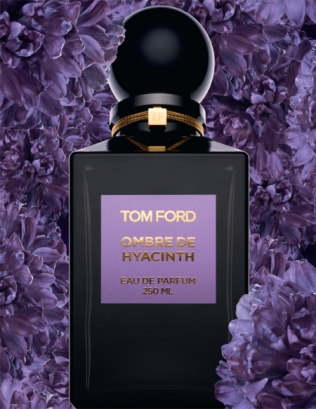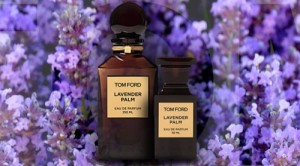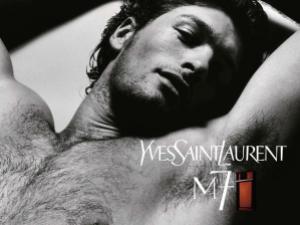Subversive. Forbidden. Intoxicating. Bewitching. Darkness that is so thrillingly beautiful it “could almost ruin you.”
That was Tom Ford’s goal for his 2012 Jardin Noir collection, a subset of his prestige “Private Blend” line of fragrances. His twist on traditionally innocent flowers encompassed roses, narcissus, hyacinths, and lilies with Café Rose, Jonquille de Nuit, Ombre de Hyacinth and Lys Fume. I have three of fragrances and have already reviewed Ombre de Hyacinth.
This review is focused solely on Café Rose, a scent that triggered a wide array of emotions, but which ultimately left me feeling cold. To be honest, it was quite overwhelming at times. By the end, I felt simply tired out and beaten over the head. I am admittedly not a huge worshipper of rose fragrances, but there is something almost bullying, cloying, and deeply exhausting about Café Rose.

We’re getting ahead of ourselves. According to Tom Ford’s full press release description for the Jardin Noir collection on Bergdorf Goodman’s site, his vision for the Jardin Noir collection is as follows:
Jardin Noir explores the forbidden sides of four of perfumery’s most treasured blooms: narcissus, hyancinth [sic], rose, and lily.
Convention is abandoned and unexpected ingredients converge with bewitching and intoxicating results. Iconic flowers fall open, dropping their innocent facades to reveal the subversive beauty and fierce elegance they normally keep hidden.
The specific description of Café Rose is quite beautiful:
Enticing. Exotic. Seductive. Cafe Rose descends into a hidden labyrinth, where roses’ fine breeding gives way to darker pleasures.
Café Rose was created by Antoine Liu and, according to Fragrantica, the notes are:
Top notes are saffron, black pepper and may rose; middle notes are turkish rose, bulgarian rose and coffee; base notes are incense, amber, sandalwood and patchouli.
Tom Ford fragrances are the oddest thing on my skin because how they smell can vary substantially with how much you put on. Café Rose is no exception. I tried it on three times, each with slightly varying results for the opening stage. On each occasion, I put on less of the perfume with the third time having the very smallest amount. That time, the perfume opened with a faintly soapy musk note that was sweet with an almost vanilla-like undertone to the roses. It was definitely a plethora of white musk, which I am not particularly keen on, I must say.
With that outcome being a slight exception, my overall first impression of Café Rose has always been fruited roses — with only the concentration or degree of the note varying. There is an explosively sweet impression of roses — blood-red and tea-rose pink — with jammy notes that definitely evoke fruit. There is a dark grape, almost like Welch’s, as well as something that smells surprisingly a little like canned peaches.
I suspect the patchouli is responsible for that very “purple patchouli” fruited note; those who dislike it may want to want to steer clear of Café Rose because there really is no escaping it. It’s there almost from start to finish. It also adds a very thick, almost gooey and unctuous feel to the roses which, at times, can feel spectacularly sweet. That sweetness almost verges on “tea rose” territory, and those of you who were around for the infamous ’80s Tea Rose fragrance from Perfumer’s Workshop may shudder in response.
Despite the headiness and painful sweetness of Café Rose, the perfume is never oppressively heavy. Ten minutes after applying it in even a concentrated dose (2 good sprays), it becomes a much lighter, sheerer scent. The sillage drops as well, though this is one very persistent perfume. I don’t detect any saffron in its own right but there is a vague sense of creamy sandalwood underneath all that jammy fruit.
Two hours in, Café Rose turns darker with the presence of black pepper and coffee. The black pepper adds a slightly fiery, peppery bite to the sweetness of the floral note, though at times it feels more like pink peppercorns in a combination that is all too familiar these days. The coffee note is far more interesting. If you’re expecting the aroma of Starbucks or roasted coffee beans, you will be disappointed. Here, it’s more like the wet, black coffee grounds that you empty out of your filter after you’ve brewed a cup. It adds a faintly bitter, nutty, earthy note to that heavily jammy, very fruited rose note.
The fiery pepper and the bitter coffee make a valiant (though not wholly successful) effort at diluting the jamminess of the roses. Thank God for small favours, because, by the two-hour benchmark, my nose was quite oppressed by just how sweet this perfume is. Plus, to be quite frank, there is almost an artificial, synthetic aspect to things where it doesn’t smell wholly natural but, rather, just…. painful. It’s hard to explain, but there is something in this perfume that — no matter how much or how little you put on — simply feels cloying. And, really, there seems to be no escape from it.
That overwhelmed feeling probably explains why I couldn’t detect a plethora of notes in Café Rose. Over the course of its development, the degree of the black pepper and black coffee grinds rose and waned in differing degrees, but the oppressive presence of that very purple patchouli note dulled everything else to a large degree. There was some creamy sandalwood and, I suppose, faint smoke from the incense, but did I mention purple patchouli?
It did fade away, eventually, leaving me gasping like a stranded seal on a beach. At that point, about seven hours later, all that remained was the rose note, accompanied simply by vanilla and powder. Then, in the eighth and final hour, there was merely some vague, amorphous sense of a powdery soapy musk.
Oddly, on the third test, when I wore very little of the fragrance, the painful purpleness was much less. Instead, now, there was just that soapy white musk accord which I cannot stand. It felt clean and fresh, I suppose. If that’s damning with faint praise, it’s because it’s meant to be.
Café Rose does have its fans, many of whom seem to find it a purely rose and coffee fragrance. However, a good number of people on Fragrantica find it to be a substantially poorer cousin to Tom Ford‘s Noir de Noir. I agree with that assessment. I liked a good portion of Noir de Noir (which I reviewed here) and, though I didn’t like its powdered violet finish, I think it’s a much better, more complex treatment of roses.
On Fragrantica, a number of others keep talking about Café Rose having an oud note — which frankly leaves me utterly bewildered. If I didn’t have a manufacturer’s sample with the card and labeling on the vial, I’d wonder if I tried the wrong perfume. There is absolutely no agarwood in this cloying sweet, peppered aberration.
I’m sure there is more to say on Café Rose — more talk of sillage and longevity, or some positive reviews I could link to, as well as other negative ones. To be honest, I simply lack the energy for that. After living with this bloody thing for two days, and making every effort possible to be fair, I find myself just wanting to be rid of it. I’m tired of Café Rose — on every possible level. I want it gone from my life forever. In fact, since I cannot bear another moment thinking of, discussing, or even wearing this blasted thing, I’m ending this here and now.









